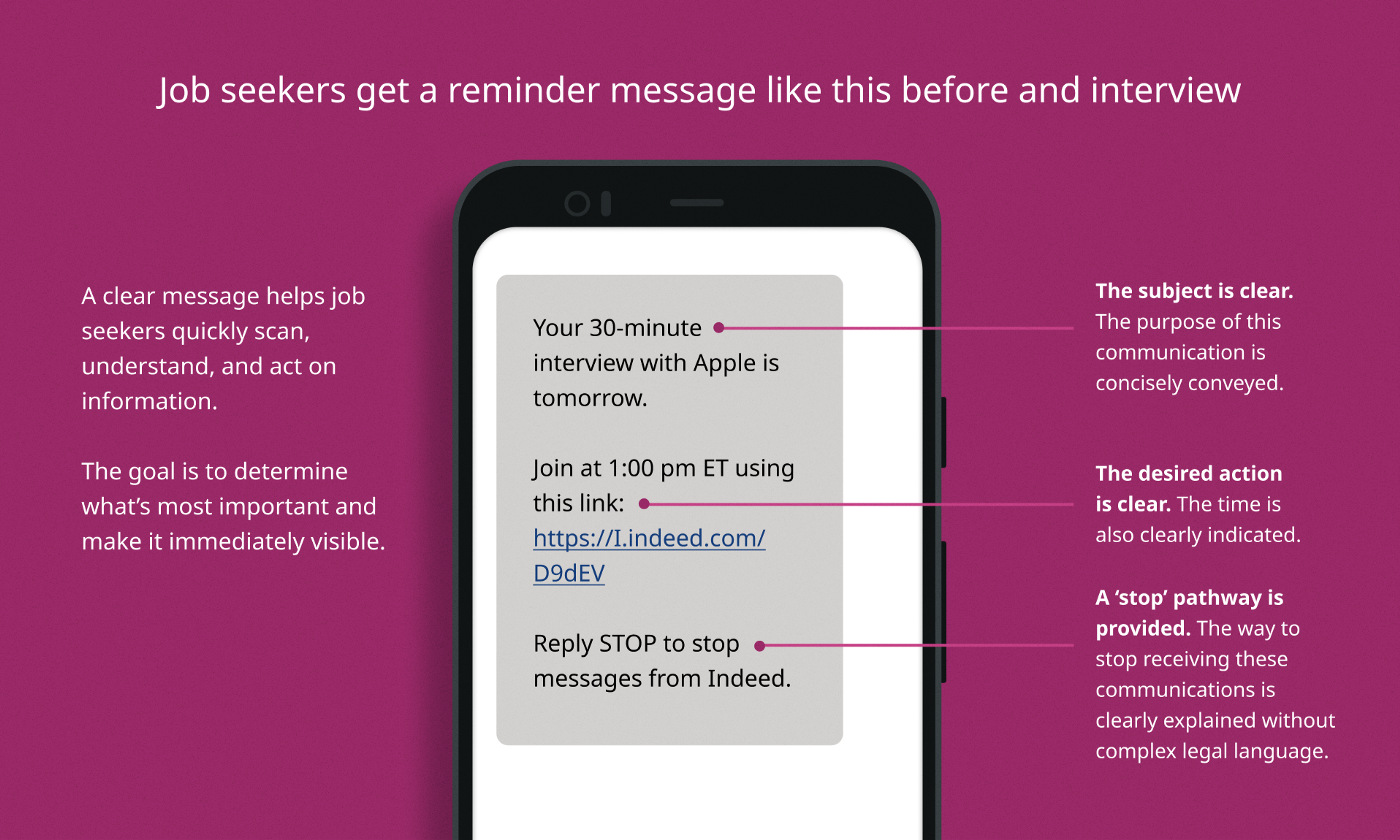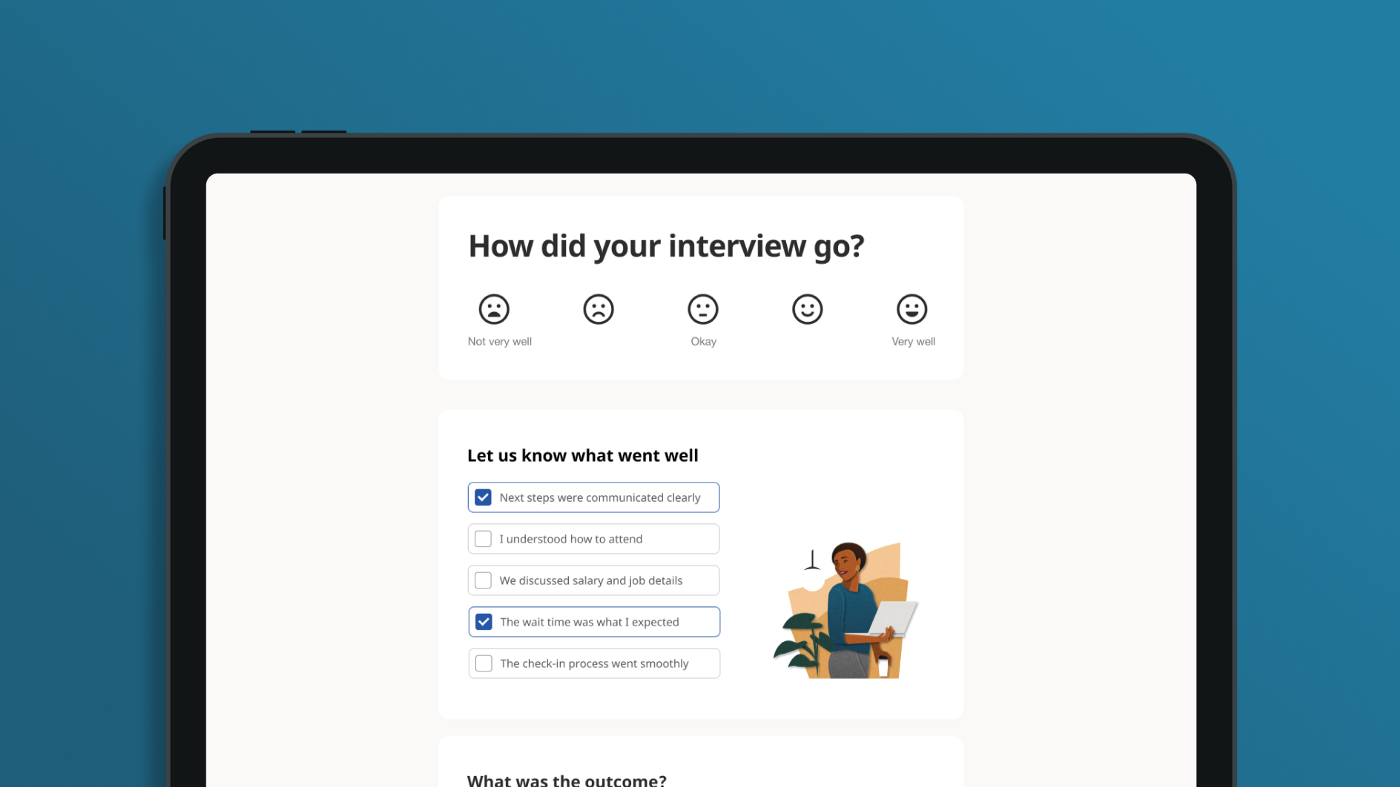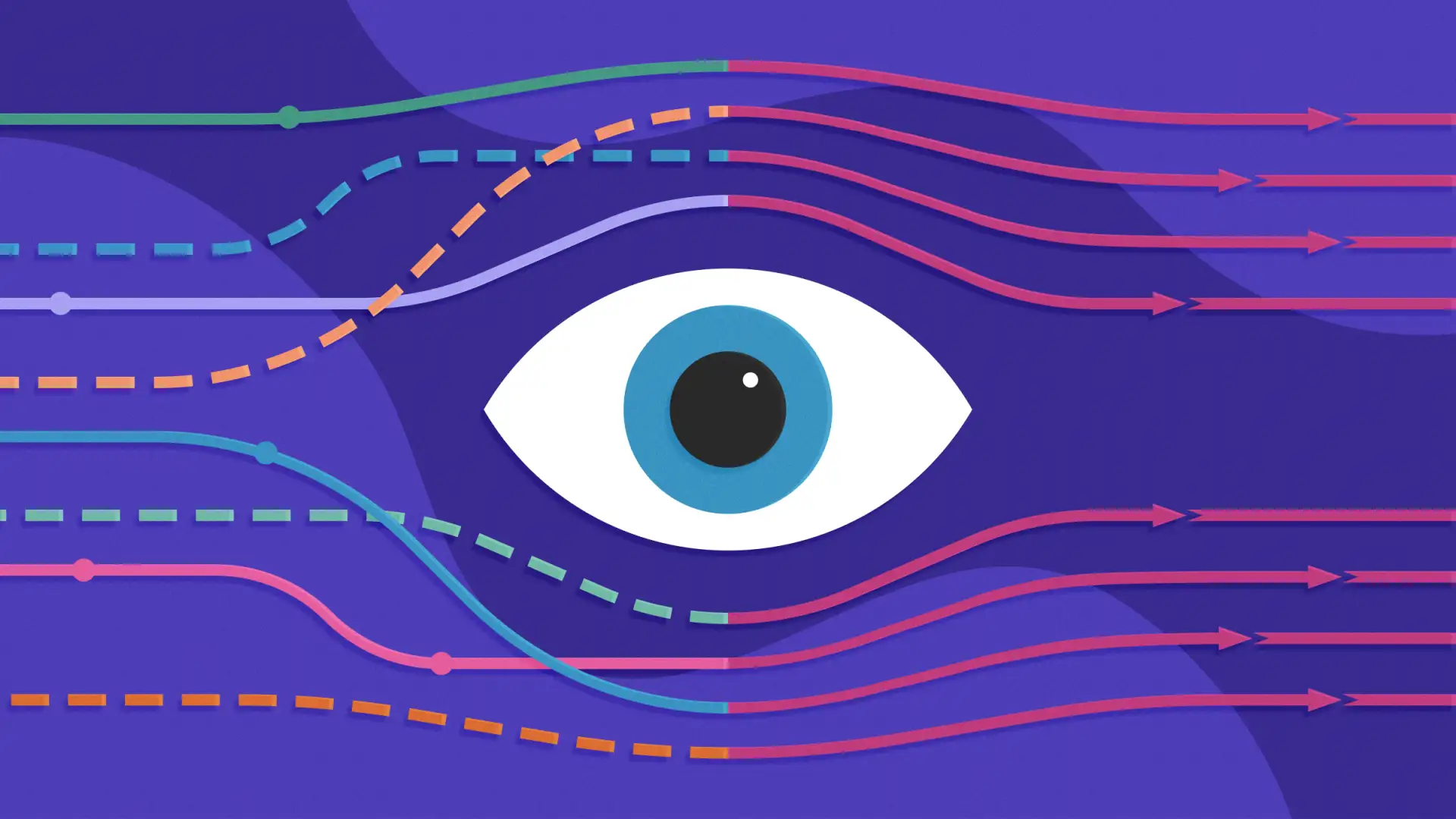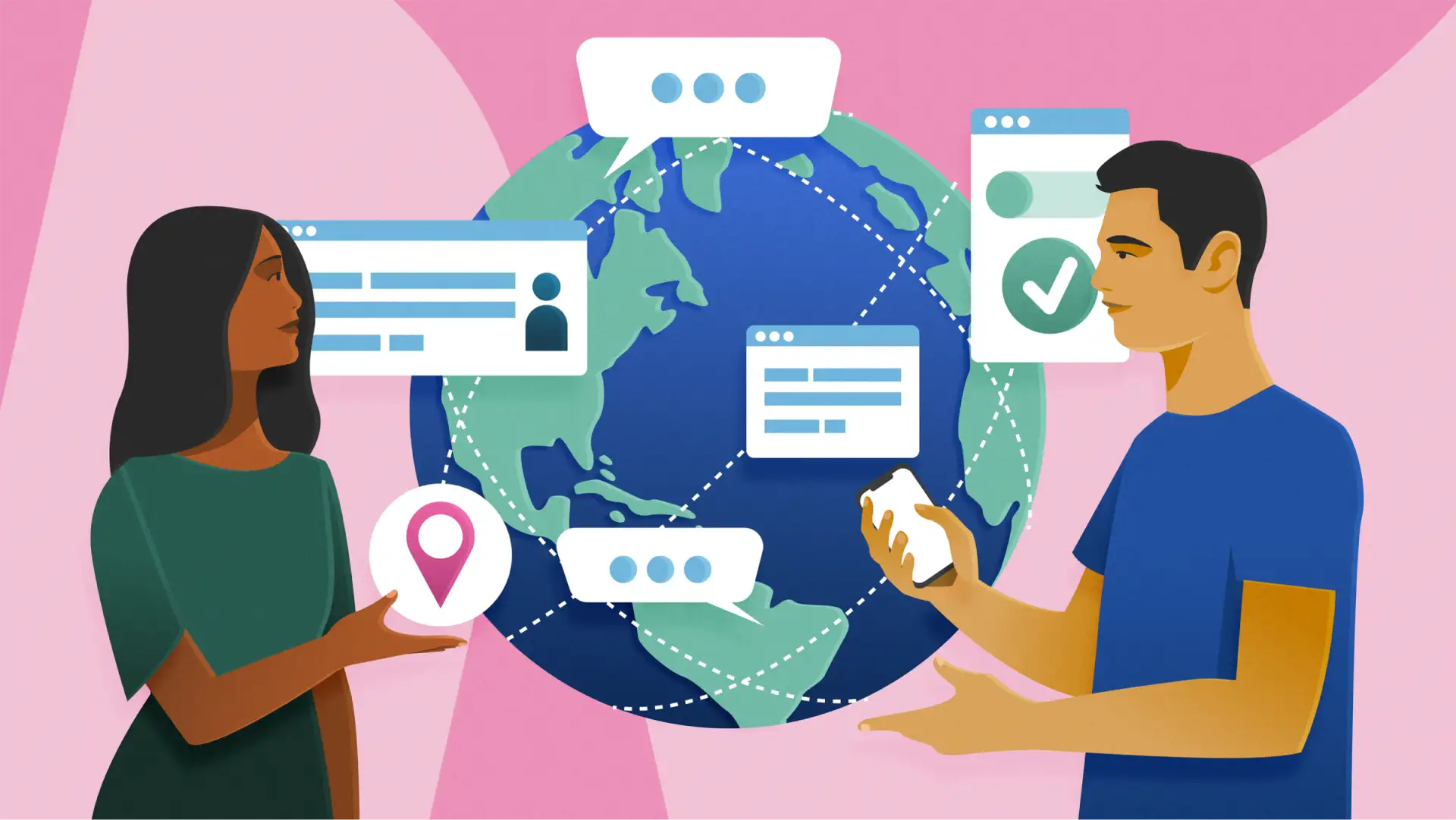Content designers, like product managers and UX designers, start doing their work by asking questions. The problem is that they often do this in isolation while design concepts take shape. Those concepts are typically influenced by product managers’ roadmaps, UX researchers’ findings, and UX designers’ mockups. Content designers enter the picture much later, often after the input from other teams has already been finalized. Sometimes, this means a product team asks content designers to assess predetermined solutions instead of core problems.
When content designers aren’t brought in early, they may find themselves writing explanatory copy for experiences that don’t meet users where they are. Or they may need to add error messages because nothing was built to prevent users from encountering a system error in the first place. Content designers excel at identifying complicated requirements and anticipating how a product can meet a user’s needs efficiently, so they can help design and product teams avoid unnecessary steps. If teams detect roadblocks, they can only hope users don’t abandon what could’ve been a more thoughtfully built experience.
Since experiences are essentially stories, it’s important for teams to figure out what kind they want to tell. To do this, many design teams rely on workshops and brainstorming sessions that transform varied goals and insights into holistic guidance that goes beyond particular words, images, and interactions. It makes the most sense for a content designer to own these kinds of exercises because empathetic storytelling is a foundational element of what we do. Since any design team’s ultimate goal is to improve experiences for their users, it’s best when collaborations and long-term product planning aim to meet those users where they are.
How Indeed reinforces the importance of content design
Content designers on any team can offer valuable insights that lead to empathetic product experiences. As part of a vision team tasked with exploring interview experiences on Indeed, I created this content design discussion guide (which includes the following list of questions) to spark meaningful, open conversations about where our design process should begin. While the guide contains placeholder sections for specific content elements like error messages and empty states, the questions aim to help teams establish a strong foundation for all aspects of their design work.
Since experiences are essentially stories, it’s important for teams to figure out what kind they want to tell.
Through collaboration, our vision team created a cohesive design strategy once every relevant question was out in the open. We were also able to develop a more nuanced story about who would use Indeed’s interview product(s) and why.
We found that key questions about people, product, and process helped start important design conversations about how an early content focus can impact design thinking. Your team might find them useful, too.
Questions about people
What is known about the user(s)? In early conversations, product designers can consider contextual user objectives and how evolving industry trends might affect attitudes toward specific products and communications, but content designers can help teams identify exactly where empathy can be incorporated based on human needs.
What user expectation(s) should we consider? At Indeed, job-search experiences span a variety of scenarios that determine how, when, and why job seekers choose to use Indeed. Content designers add a valuable layer of storytelling in this phase of discovery about product users.
What goal(s) are we helping users accomplish? Once users’ problems are better understood, it’s important to contextualize them within larger goals that transcend particular products, brands, and organizations. This question gives the team an opportunity to get back to basics and focus on big-picture storytelling.
How can we reinforce trust among users? Each step of an experience represents an opportunity to reassure the user and make them more likely to return. If trust is only considered in the abstract, a design team could end up building something that erodes it. Content designers can help teams proactively build credibility and transparency into their product experiences at every step. For example, when job seekers on Indeed are asked to provide demographic information, explanatory content clearly presents the request as optional and secure.
Where a user encounters sensitive requests can also act as a make-or-break moment in building trust. It could be within a dashboard view or immediately visible when they log in to their Indeed account. When making these choices, earlier input from content designers can help teams incorporate more than just reassuring language. A holistic design approach helps users feel like the information they share is valued and protected.
Example: How asking questions early helped improve an interview reminder for job seekers
In a project to create a text message reminder sent to job seekers before a virtual interview, I was involved from the very beginning of the design process to focus our process on user goals, expectations, and trust. I worked alongside a UX researcher to form research questions, review unmoderated testing sessions, and assess pain points.

Through this research, we found that using the word “with” instead of “at” before the company name helped Indeed distinguish virtual interviews from interviews at physical locations. Research sessions also taught us that job seekers responded better to an indication of how long the interview would be (30 minutes) and that they benefited from a clear separation between mentions of Indeed and the company interviewing them. These findings eventually helped us shape a larger story that affected how we reached out to job seekers in emails, product pages, and the interview experience itself, and we may not have found them had we not worked together from the beginning.
A holistic design approach helps users feel like the information they share is valued and protected.
Questions about products
How can we make sure what we build is as accessible and inclusive as possible? Products should always be accessible, informative, and equipped to address a variety of needs. Otherwise, many technical and behavioral barriers for users may go unnoticed. For example, when employers hiring with Indeed choose language for job listings on our site, they can access an article by our Vice President of Diversity, Inclusion & Belonging, LaFawn Davis, explaining why the idea of “culture fit” should be replaced by “culture add” in their posts. Including rigid ideas about a company’s “culture” in a job description can keep traditionally marginalized people from applying to certain workplaces. Early input from content designers can help teams build experiences and choose language that supports more inclusive hiring practices.
What problem(s) are we trying to address? Teams should consider how their products and ideas exist in the world. UX researchers, behavioral scientists, and product managers can help identify problems that aren’t merely theoretical. Content designers can synthesize their team members’ insights to make sure they avoid a predetermined problem-to-solution pathway.
What are potential user obstacles and how should they be addressed? Indeed builds products for employers that may end up being used by many people within organizations that have varying levels of visibility. If someone doesn’t have the proper context to navigate something, they’re much more likely to abandon it. A design team should consider how their choices impact different permission levels and day-to-day tasks for many user types. Content designers can turn these considerations into necessary parameters that inform more nuanced design work.
Is there anything we’d need to familiarize users with as they navigate what we build? Content designers help refine things like instructional copy, disclaimers, and dropdown menu options, too. These components help users navigate experiences and participate in stories. A design team can save a lot of time by considering user familiarity as early as possible. This question may be difficult to answer completely until there’s a definitive experience for users to navigate. Still, raising it early with content designers present can have an impact on how teams account for their users’ comfort levels.
Questions about process
Are there any existing solutions we should consider leveraging, enhancing, or replacing? When approaching new problems or product needs, design teams often lean on what’s worked before. While this may be a sensible approach in many cases, it’s always worth considering exactly how we frame those pre-existing solutions. Some parts of those solutions may need to be improved or taken out, and identifying revisions early can benefit the team and the product. When teams welcome early collaborative conversations to re-evaluate how a past solution might work for a new product experience, content designers can provide an updated perspective about what users might need and how they’ll interact with the end product.
What are our most important research questions? A lot of organizations talk about being data-driven and listening to their users. These are great principles to maintain, but proactively applying them on a project-by-project basis demands a nuanced perspective. Since content designers are familiar with framing their objectives as clear questions, they can shape the way teams determine how to form research questions that align with their principles and product goals. For example, with a team doing research on how to make a concept easier to understand, content designers can brainstorm objective ways to ask users about it — and testable versions of how to phrase the concept.
Example: How asking questions early helped improve a feedback request experience for job seekers
After job seekers attend virtual interviews on Indeed, a survey asks for their feedback. I collaborated with a UX designer to create a survey page concept that would help us gather meaningful feedback in a way that wouldn’t disrupt job seekers’ overall experiences on Indeed. By asking about existing solutions we could leverage, enhance, or replace, we remained conscious of the many survey pages Indeed has previously designed. Asking for feedback from job seekers was familiar, but asking specifically about interview experiences on Indeed was something new. By considering the most important questions UX researchers were already asking, we were able to design survey content that would generate meaningful, measurable responses.
This survey page I worked on asks job seekers about virtual interviews on Indeed:

It’s become a reliable tool for our design team to make changes based on real-time feedback. We built two valuable tools: a product page and a feedback loop that could help us improve different parts of the interview experience.
Collaborate with content designers early and often
Any team can create space for discussions about established design systems, company-wide objectives, research methods, and product goals. But bringing in a content designer early can help teams identify the purest version of the story they want to tell with their product experience. Content designers do this by focusing conversations around why products exist, who uses them, and why they may need to change.
Content-inclusive design thinking helps people focus on why they’re doing something before they figure out how to do it. It also gives everyone meaningful solutions to return to as different needs and constraints arise throughout the design process. While a content designer’s role is certainly valuable at the later stages of a project (especially when it comes to maintaining a meaningful voice and context-specific tone), they can also help teams tell meaningful stories and empathetically address pressing user problems.





